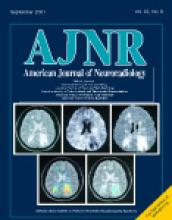In this issue of the AJNR, Provenzale et al (page 1455) have furthered the understanding of diffusion-weighted (DW) imaging in the evaluation and characterization of a nonischemic condition, posterior reversible encephalopathy syndrome (PRES). PRES is a reversible syndrome characterized by headache and altered mental functioning, often with visual disturbances and seizures. MR imaging usually demonstrates bilateral subcortical and cortical edema with a predominantly posterior distribution (1). PRES is secondary to various causes, including hypertensive encephalopathy, eclampsia, and immunosuppressant drug toxicities. Since most patients manifest hypertension, the leading pathophysiological theory of PRES suggests the cause to be hyperperfusion with blood-brain–barrier disruption, leading to reversible edema without infarction. Occasionally, however, complications can result in infarctions and vasospasm. Earlier studies have used DW imaging to exclude such ischemia in PRES patients (2, 3). On apparent diffusion coefficient (ADC) maps, patients with PRES have typically demonstrated increased high signal intensity in the lesions, signifying vasogenic edema. Such vasogenic edema theoretically could be expected to result in decreased signal intensity on DW images relative to the surrounding brain. In actuality, however, DW imaging findings are most often remarkably normal despite obvious abnormalities on conventional MR images and on ADC maps. To understand this phenomenon, one must understand the underlying contributions to signal intensity on DW images.
In DW imaging, high-amplitude bipolar gradients sensitize a T2-weighted MR image to the Brownian motion of water molecules. Despite the small magnitude of this motion (on the order of a few microns) during the diffusion gradient, it results in intravoxel dephasing and signal loss. Nondiffusing stationary molecules show no such signal reduction from the brief diffusion gradient. Signal intensity on DW images is thus due to two intrinsic competing components: degree of T2 signal intensity and degree of diffusion. On DW images, fast or increased diffusion tends to result in decreased, hypointense voxel values (ie, greater signal loss from dephasing). Slow or restricted diffusion tends to result in hyperintense voxel values (ie, less signal loss from dephasing). In its most common application, DW imaging depicts hyperacute ischemic injury as high signal intensity in the lesion due to restricted diffusion. Occasionally, however, certain T2 hyperintense lesions can, in the absence of restricted diffusion, still appear hyperintense on DW images, a phenomenon called “T2 shine-through.” This is most often seen with subacute infarctions due to vasogenic edema but can be seen in other pathologic abnormalities.
Investigators are able to distinguish the cause of high signal intensity on DW images by means of calculated ADC maps or values. ADC is a value that measures the effect of diffusion independent of the influence of T2 shine-through. The ADC is an intrinsic property of the studied tissue and is unrelated to the MR hardware or sequence parameters used. ADC values in each voxel can be measured on an image, or an ADC map can be generated with voxel intensities proportional to ADC values. ADC maps thus portray restricted diffusion, such as in ischemic injury, as hypointense lesions relative to normal brain.
Provenzale et al have shown that the somewhat puzzling finding of normal DW images despite significant vasogenic edema in PRES is secondary to a precise balance that occurs between the addition of signal intensity to the image from the T2 component and the degree of suppression of signal intensity from the image due to the elevated ADC of the lesions. They term this phenomon “T2-washout”, since the intravoxel dephasing related to the increased water diffusion in the vasogenic edema washes out the inherent increased T2 signal intensity in the lesions. The concept of T2-washout is probably not unique to PRES and likely occurs in other pathologic conditions in which the DW trace images appear normal.
Since its beginnings, DW imaging has been used predominantly in the investigation of ischemic conditions. As seen in this issue and numerous preceding issues of the AJNR, neuroradiologists are becoming more aware of the additional uses of DW imaging in the evaluation of nonischemic processes like PRES and other pathologic abnormalities such as demyelination, neoplasm, and infection. ADC maps have traditionally been generated “off-line” on separate workstations, often with the help of our physics colleagues and image processing labs. Software, allowing for on-line ADC maps automatically processed on the MR system by the technologist, is now available from some MR manufacturers. We, as neuroradiologists, should encourage all MR manufacturers to include such ADC processing software on their systems, as well as to make available upgrades for legacy MR units, so that ADC maps can be routinely available at the time of original interpretation of selected MR studies. The increasing use of ADC maps and measurements in nonischemic conditions, even in those conditions that on the surface might otherwise appear “normal” on DW images alone, is likely to yield a wealth of diagnostic, prognostic, and pathophysiological information.
- Copyright © American Society of Neuroradiology







